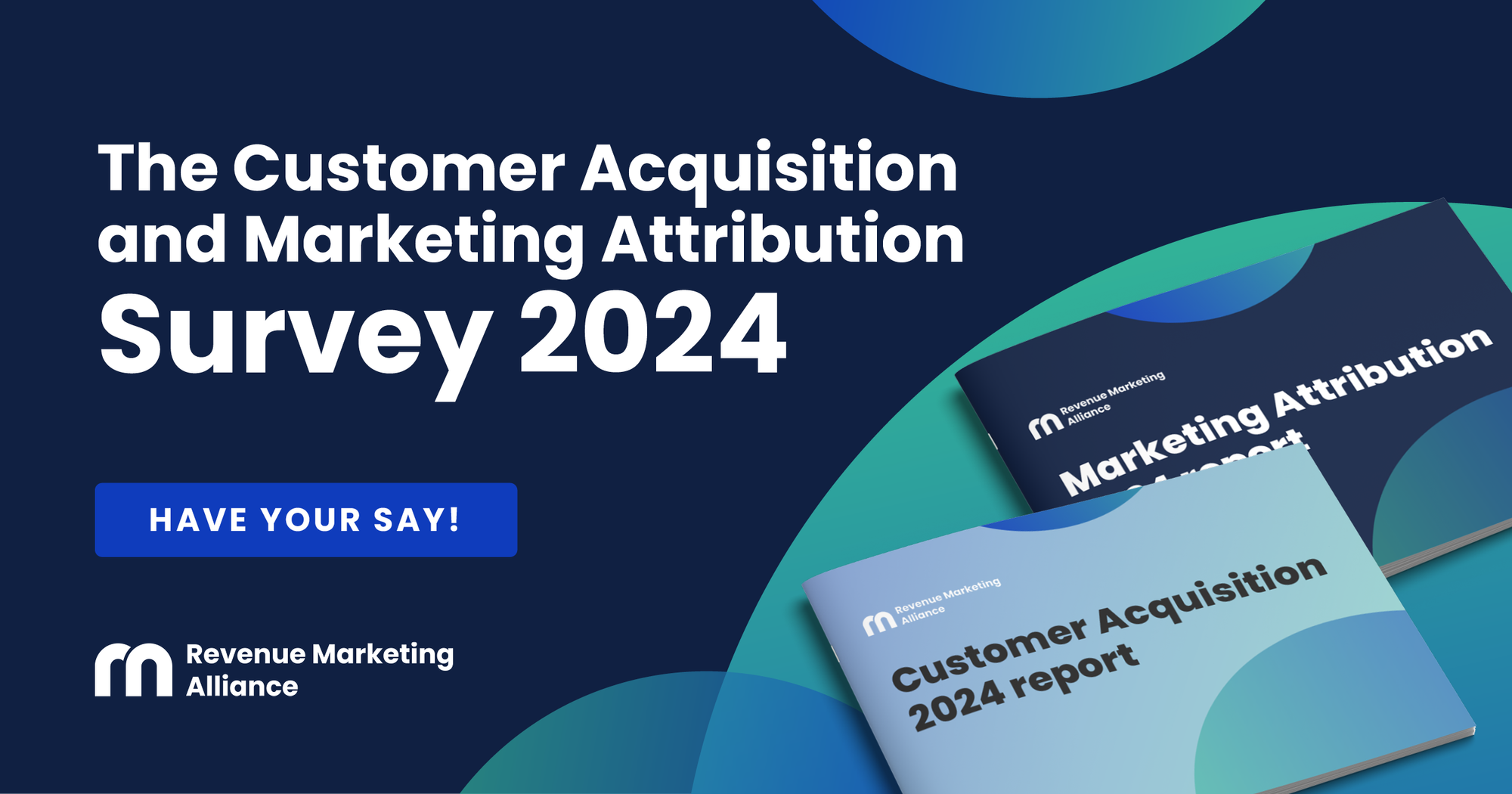We can talk for hours about the importance of email to B2B marketing. How it’s the No.1 channel for revenue generation for 59% of email marketers. How it can potentially have an incredible ROI of 4100%. How it’s used by 81% of B2B marketers. The list goes on.
But essential as it is, you can’t just throw your emails out there and hope for the best. You need to measure the effectiveness of your email marketing so you can:
- See what’s working, so you can do more of it.
- See what isn’t working, so you can do less of it and improve it.
- Have clear stats to show people outside the marketing department.
The best way to do this is to establish clear KPIs (key performance indicators) for all the different types of email marketing. With these in place, you can find out what you need to adjust to optimize your email marketing strategies.
But which KPIs to pick and track? There are many types that we B2B marketers use because there are many types of emails we send out.
In this article, we’ve picked out popular email KPIs, explained why they’re important (or not), and included a bit on what you can do to improve them. Most email marketing automation systems will keep track of these for you, so the question isn’t “Where do I find this data?”, but more “What the heck do I do with it?”.
- Open rate
- Click through rate
- Conversion rate
- Growth/unsubscribe rate
- Bounce rate
- Sharing/forwarding rate
- ROI

Open rate
Let’s start at the top: how many people are opening your emails? We measure this with the open rate, which you work out as the percentage of emails you send that get opened by the recipients.
This might be an important metric, but it should never be the only KPI you focus on.
A big reason for this is that most email marketing software systems only count an email as being opened when all the images in the email are displayed. Many email inboxes will automatically block images from being displayed without some kind of action by the user, meaning your actual open rate could be higher than the reported one.
Another is that it’s not really telling you much. Someone opened your email. So what? It doesn’t tell you at all how they’ve responded to the email, like what actions they might have taken or which content they’ve engaged with.
That’s not to say a low open rate is something you can ignore. It’s a good metric for the effectiveness of your subject lines and scheduling. Maybe your subject lines are:
- Not attractive to the target audience.
- Too long for their email browsers to display properly.
- Being sent out at the wrong time or on the wrong days.
A low open rate could indicate any of these issues.
It’s also worth tracking your open rate over time. If you’re seeing fluctuations, you can establish which subjects are getting the best responses. If you’re seeing a decline or sharp drop, you might need to rethink your strategy.
Subject lines have a major impact on open rates. Check out our quick article on effective subject lines here.
Click through rate
Click through rates are the foundations of the majority of email marketers’ strategies, and just about everything they do is based on finding ways to improve this rating.
You calculate this as a percentage of the emails you sent that received clicks on the links you put in the content. Some people like to differentiate between unique clicks (clicks from different people) and total clicks (including clicks from people who click links multiple times). They both provide useful insights, it’s just important you’re consistent when comparing data over time.
So why are they so important to email marketers? When you get right down to it, it’s because it’s the easiest way to see that people are responding to the instructions in your email. Including a link gives a clear action point that can be tracked easily across a large scale. An email without a link relies on factors that might be too hard to keep track of.
If someone has clicked the link, it means the email has caught their curiosity, is responding to their needs, or providing them value in some way. It means you’ve built up enough trust within the email that they’re willing to click a link.
You can improve your click through rate in many ways, such as including clear calls to action (such as a button, rather than a link hidden in copy), engaging imagery and copy, and personalization.
For some handy tips on different ways to improve your clickthrough rate, check out our guide to email marketing best practices.
Conversion rate
Once your audience has followed a link in your email, usually there will be certain actions you’ll want them to take. This could be filling in a form, signing up for an event or membership, or purchasing a product. We track the percentage of people who do this using a conversion rate.
We usually calculate this as the percentage of the number of emails sent, but you can also do it as a percentage of the number of clickthroughs.
Calculating against the number of emails allows for big-picture ideas, like whether your audience is right for the links you’re including.
Calculating it against the number of clickthroughs gives a more specific picture of what might need work on the landing pages or websites you’re sending people to.
Is the information on the site consistent with what you’re sending in the emails? Are the links sending people to the right places? Are the landing pages attractive and easy to navigate? All these and more can have an impact on your conversion rates.
Conversion rates are essential for tracking the effectiveness of your lead-generation campaigns.
Growth/unsubscribe rate
These can be separated into two different KPIs, but really they boil down to one thing: how many people do you have on your mailing list? You need people to send your emails to!
Keeping track of how your email list is growing is a good way of evaluating the effectiveness of the methods you’re using to develop that list. But it can also be a good way to track how effective your emails are. If your email list is shrinking, too many people are unsubscribing, which could be due to many factors:
- They might not like your content,
- You could be bombarding them with too many emails,
- People might change their email addresses,
- They might just decide to do a purge of their subscriptions,
And those are just a few of the many reasons.
No matter what you do, over time, the data in your email list decays (at a rate of 22.5% a year). That’s why you always want your email list to be in a state of growth so you’re not just restoring the losses, but going further.
You’ll also want to keep track of unsubscriptions on an email-by-email basis. Many countries have laws that require marketing emails to have an easy and clear way for recipients to unsubscribe and remove their emails from your database.
If you see an email or sequence of emails that see too many people hitting that button, best to avoid that type of email in the future.
You can mitigate unsubscriptions and reduce your list decay as much as possible by making sure your emails are targeted to the needs and requirements of your audience, and that you’re sending the right number. Make sure people have a good reason to stay on your mailing list.

Bounce rate
Bounce rate is basically how many emails you’re sending that aren’t reaching the recipient. We have two types of bounce: soft bounces and hard bounces.
Soft bounces aren’t really something you need to worry about. These are temporary problems, like the recipient’s inbox is full, or their server is down.
Hard bounces, however, you do need to pay attention to. These are invalid, fake, or dead email addresses, which means your emails will never get there. Too many hard bounces and your emails may get flagged as spam.
Sharing/forwarding rate
If your emails are being shared/forwarded, it’s a good indication that they’re pretty good. The recipient likes it enough, then they’re willing to share it with other people they know.
It’s also a good way to expand your audience. The person who shares your email is allowing you to skip a few steps in discovering and contacting new leads, as they’ve picked someone they know who they’ve decided would be a good recipient for the content of your email. The golden age of chain emails might have passed, but finding ways to encourage people to share and forward your emails can be extremely valuable.
ROI
This is big-picture stuff: how much money you’re making from your emails vs. how much money you’re spending on it. As we said at the start, email has the potential for massive ROI, but remember: it’s not free.
To get the full picture of your ROI, you need to take into account the cost of creativity (such as the salaries of the people involved in your email marketing and how much time they’re spending on it), the email software you might be using, and the cost of any mailing lists you might have purchased.

As you can see, there are a lot of email marketing KPIs to track. Thankfully, most of the time you don’t have to go digging around too much to find them, as most email marketing software will extract this data for you. You just need to understand what you’re looking at.
Looking for more help with KPIs? Check out our guide to B2B social media KPIs.
Psst... now's your chance to influence the most important conversations in revenue marketing
How do leading marketers drive growth? What channels attract and convert customers? Where should budgets be allocated? What metrics matter most?
Our groundbreaking 2024 Customer Acquisition and Marketing Attribution Survey will reveal the inner workings of today's state-of-the-art revenue engines. And you can help uncover the key insights.
The insights gained will be invaluable for staying ahead of rapid changes in 2024.
This is your exclusive opportunity to shed light on:
- Current marketing attribution models and challenges
- The evolving customer journey to purchase
- How teams track and optimize funnel performance
- Emerging strategies to connect with modern buyers
- Key focus areas for growth in 2024
… And a whole lot more.
Take the survey, and at the end, receive a comprehensive Customer Journey framework slide deck to help you and your team acquire more customers with less stress! 👇




 Follow us on LinkedIn
Follow us on LinkedIn



